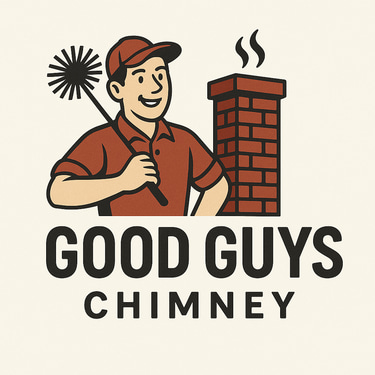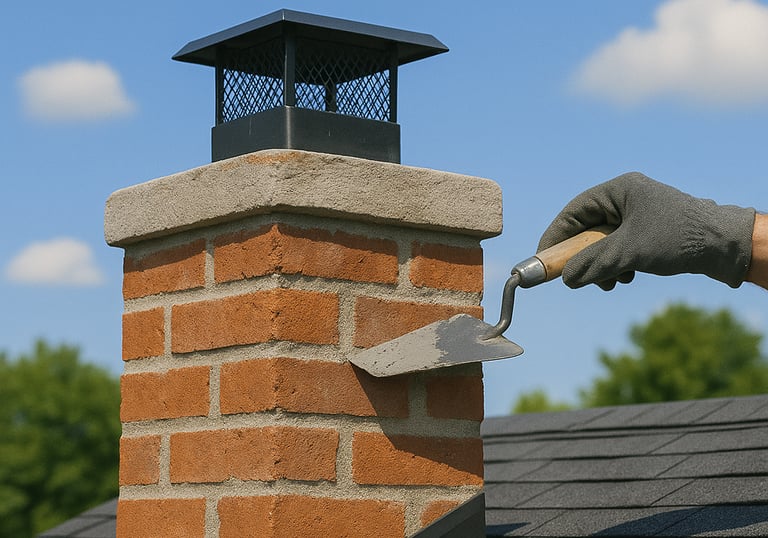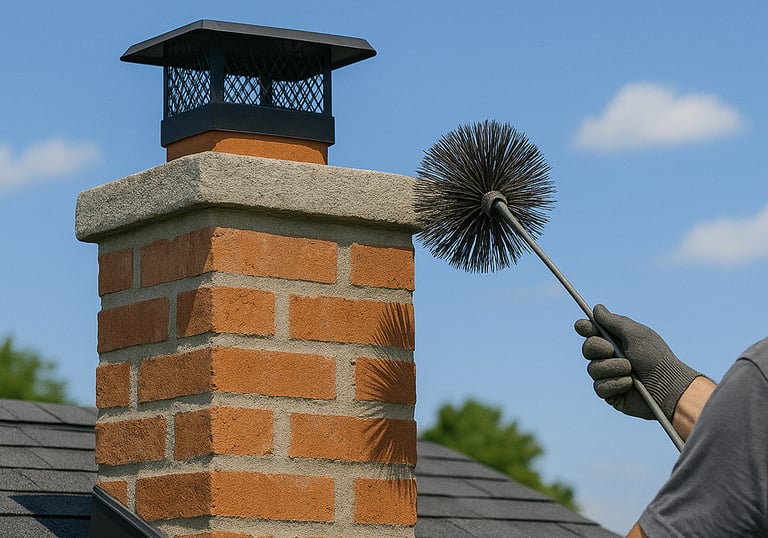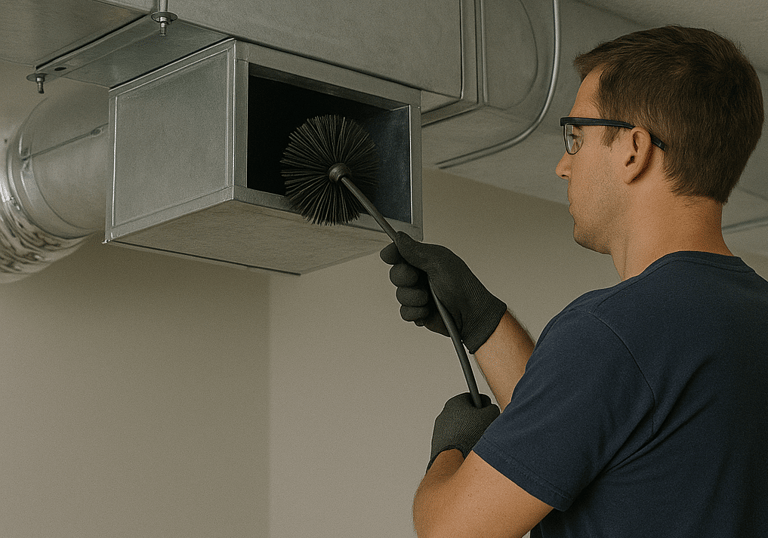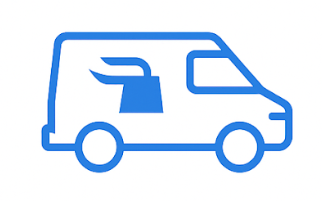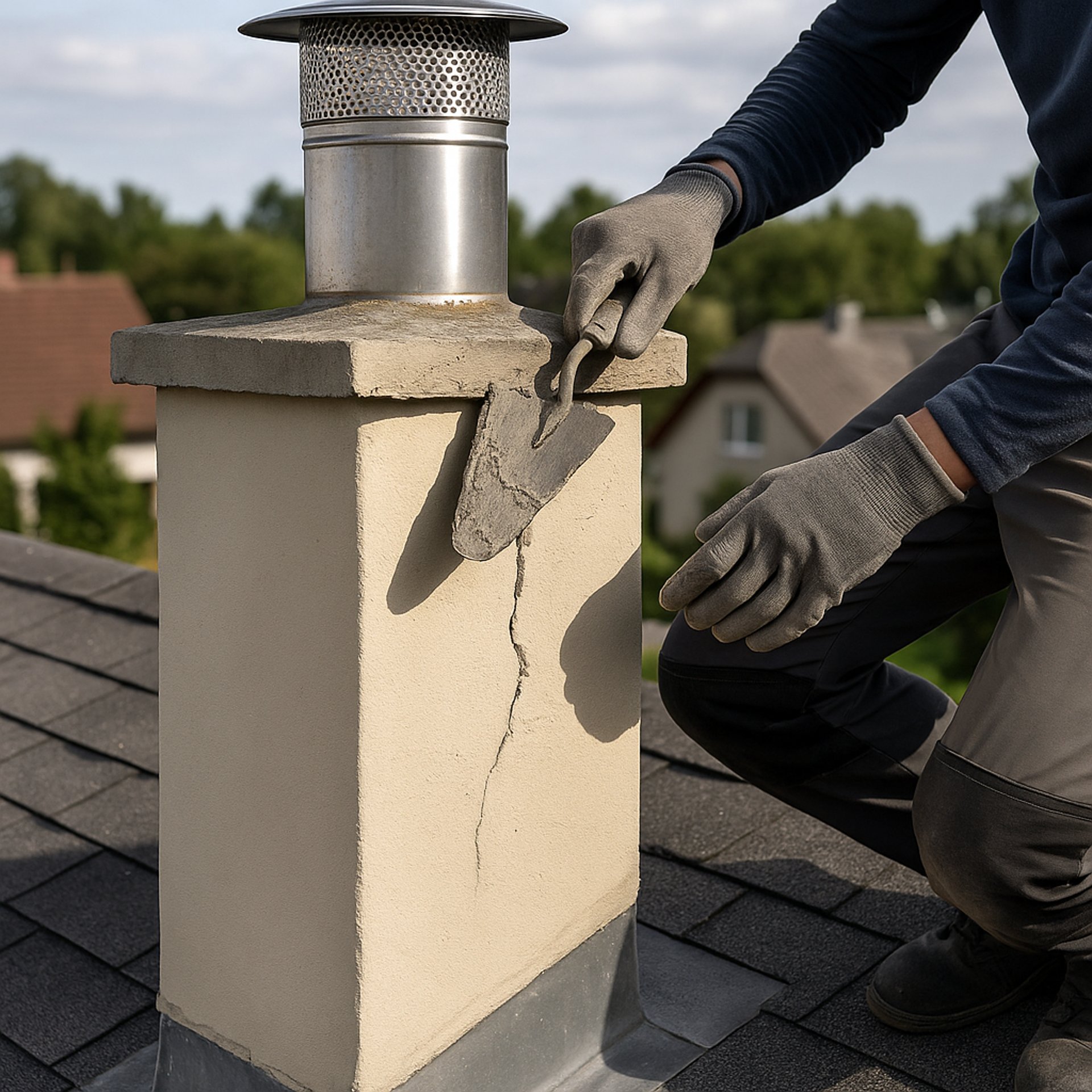
1. Can a chimney be repaired without rebuilding it?
Yes. Many chimney issues, such as minor cracks, deteriorated mortar joints, or a damaged crown, can often be addressed without a full rebuild. Techniques like tuckpointing, crown repair, and flue relining are common solutions.
2. What are common signs that my chimney needs repair?
Indicators include visible cracks in the chimney structure, loose or missing bricks, water leaks inside the fireplace, a rusted damper, or a leaning chimney. Regular inspections can help identify these issues early.
3. How often should I have my chimney inspected?
The National Fire Protection Association (NFPA) recommends an annual inspection of all chimneys, fireplaces, and vents to ensure safe and efficient operation.
4. What is chimney repointing?
Chimney repointing involves removing deteriorated mortar from the joints between bricks and replacing it with new mortar. This process restores the structural integrity of the chimney and prevents water infiltration.
5. What does a chimney sweep do?
A professional chimney sweep removes soot, creosote, and other debris from the chimney flue to prevent chimney fires and ensure proper ventilation. They also inspect the chimney for structural issues or blockages.
6. How often should I have my chimney cleaned?
For wood-burning fireplaces, it's recommended to have the chimney cleaned at least once a year. If you use your fireplace frequently, more frequent cleanings may be necessary to prevent creosote buildup.
7. What is creosote, and why is it dangerous?
Creosote is a highly flammable byproduct of burning wood that accumulates inside the chimney. If not regularly removed, it can ignite and cause a chimney fire.
8. Can I clean my chimney myself?
While some homeowners attempt DIY chimney cleaning, it's recommended to hire a certified professional to ensure thorough cleaning and inspection, reducing the risk of fire hazards.
